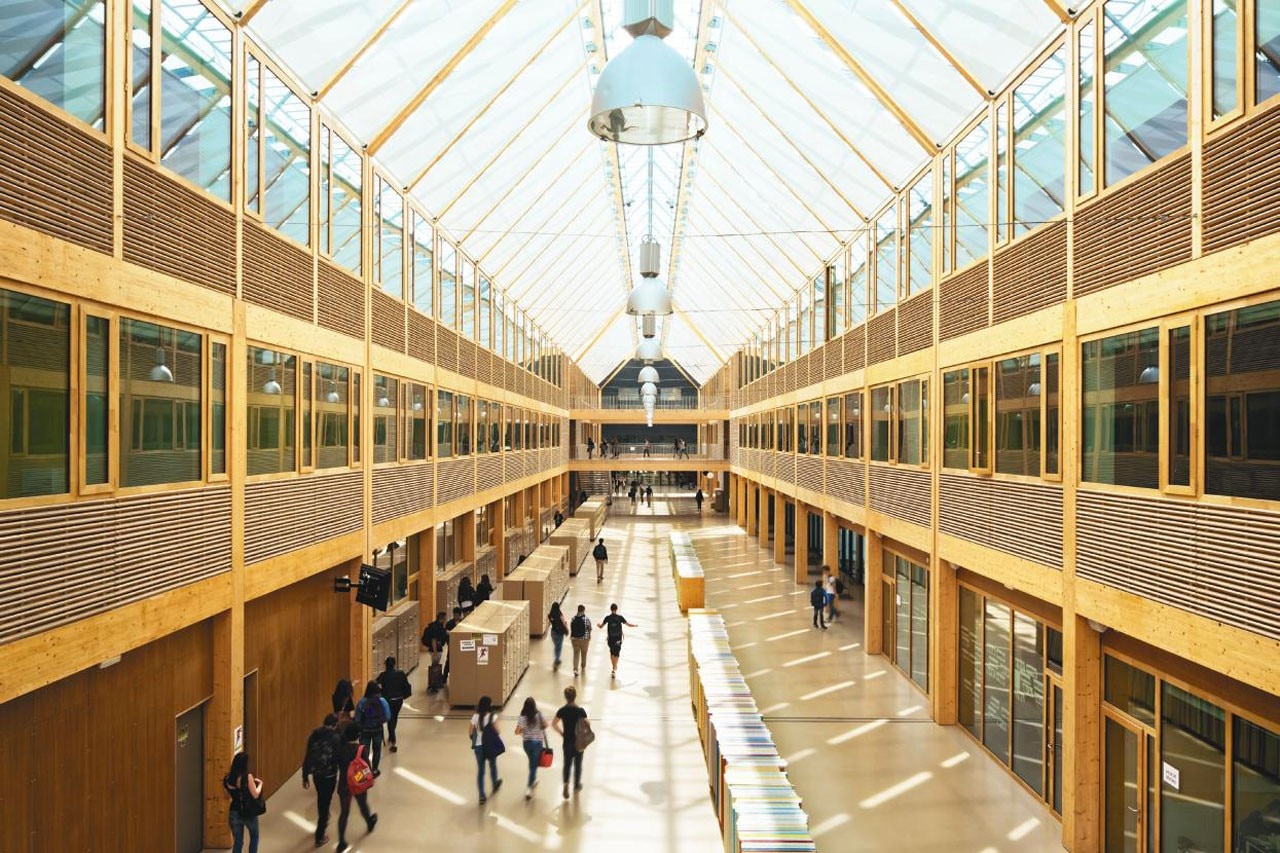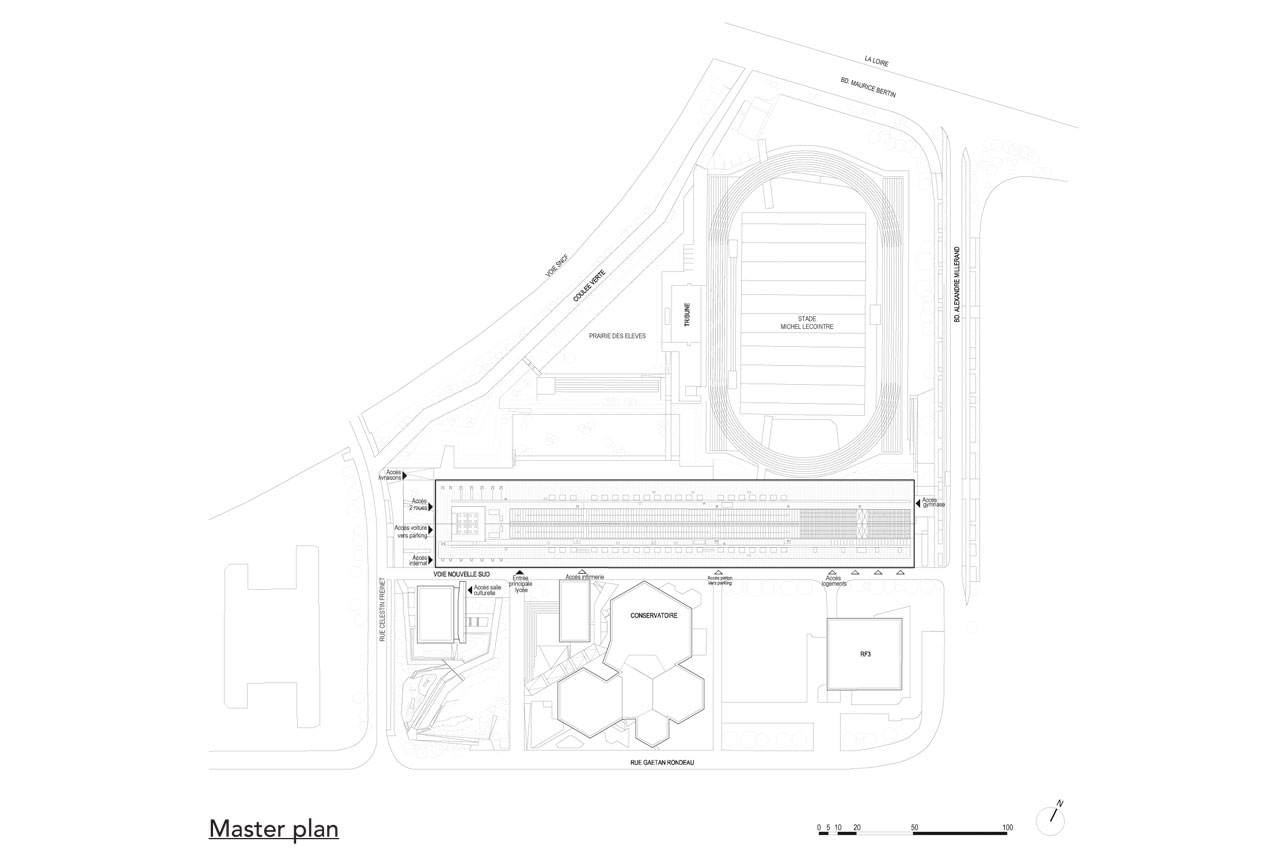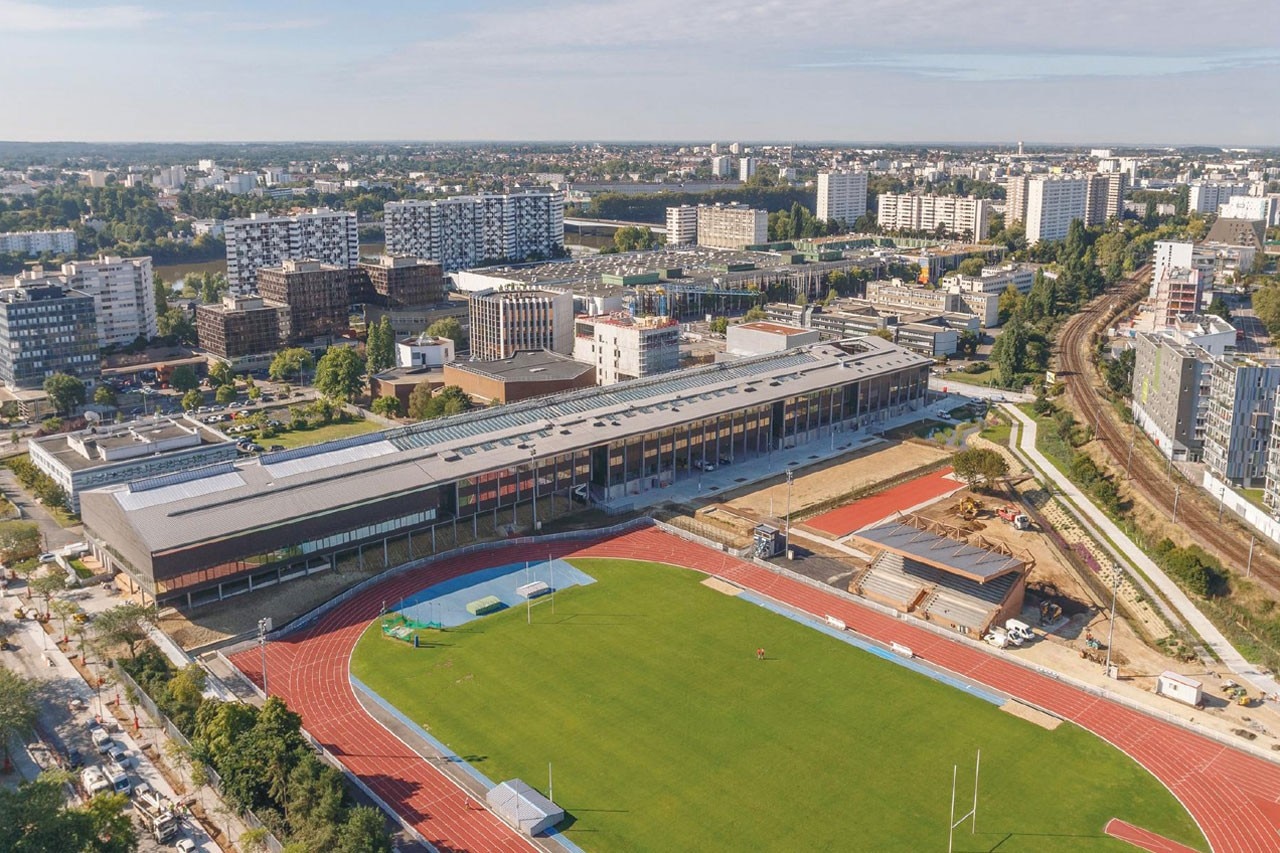
The school’s long indoor street, that encourages exchanges and circulation, combines a full program and blends a community that comes together between classes and spreads to the upper floors according to students’ schedules. This constant spectacle is given rhythm by the sun at its zenith, the variations of the light that shines down through the glass roof and the operatic arias that echo throughout the day.
Classrooms spoke out between courtyard and garden on either side of the nave in a double thickness; the rooms are served by a hallway. Some rooms give onto the isle and its urban landscape while others look out at the nave. This duality unifies the building as part of a “campus park” that combines a plaza for events, a sports ground, the “five senses garden” and an auditorium around the school’s main body.
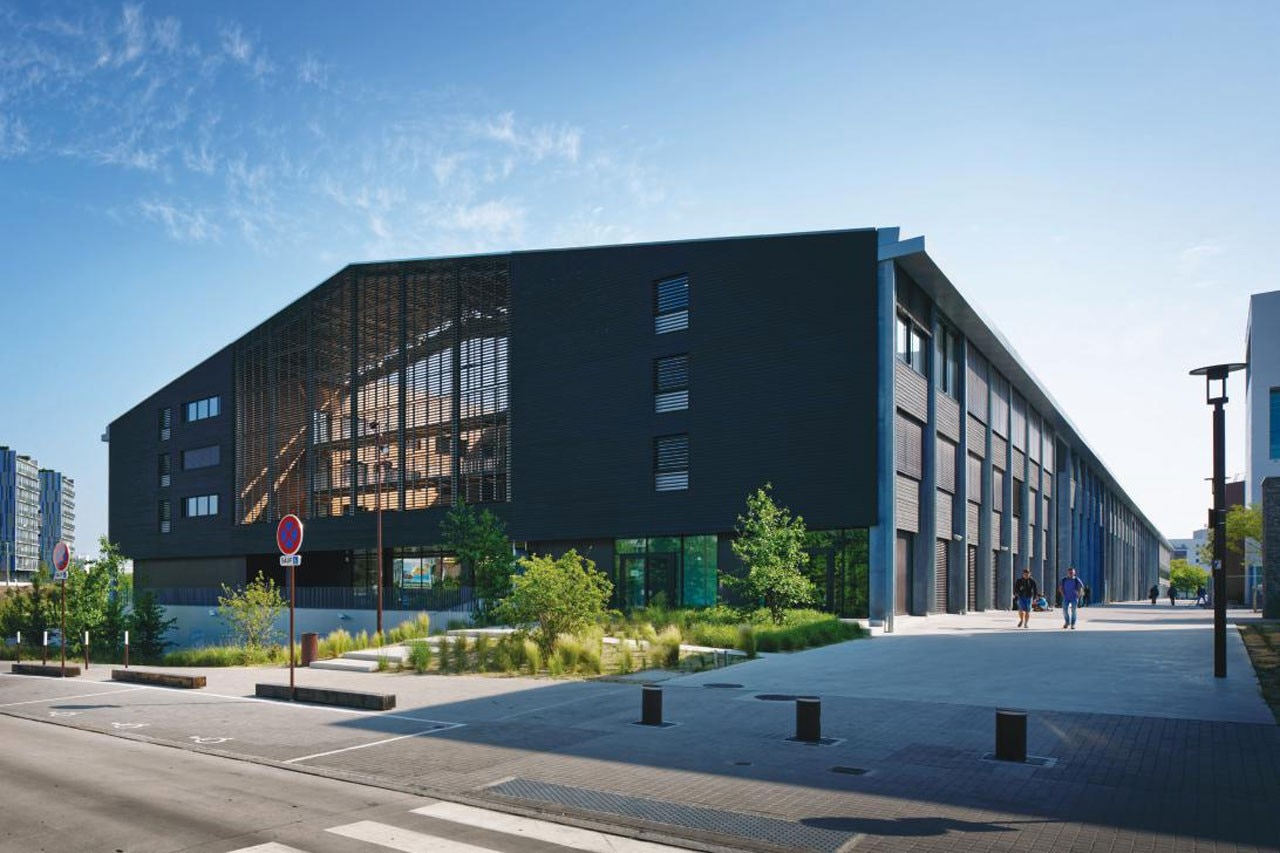
There are in fact three buildings under the glass roof that share their cold walls and views onto the nave from the documentation center’s winter garden to the cafeteria’s café terraces. This bioclimate space is vivified and dilated by high and low views of the Loire River further off. The architecture fades between this interiorness and the urban landscape to highlight the rationality of the circuits and the clarity of uses.
One end of the building contains the domestic functions like the boarding school, the cafeteria and the residences. While at the other end there are the areas around teaching such as the documentation and information center, the gymnasiums on the same ground floor as the classrooms, including a tall climbing wall, a kind of horizon for the inner street, suggesting the metaphor of an impossible escape.
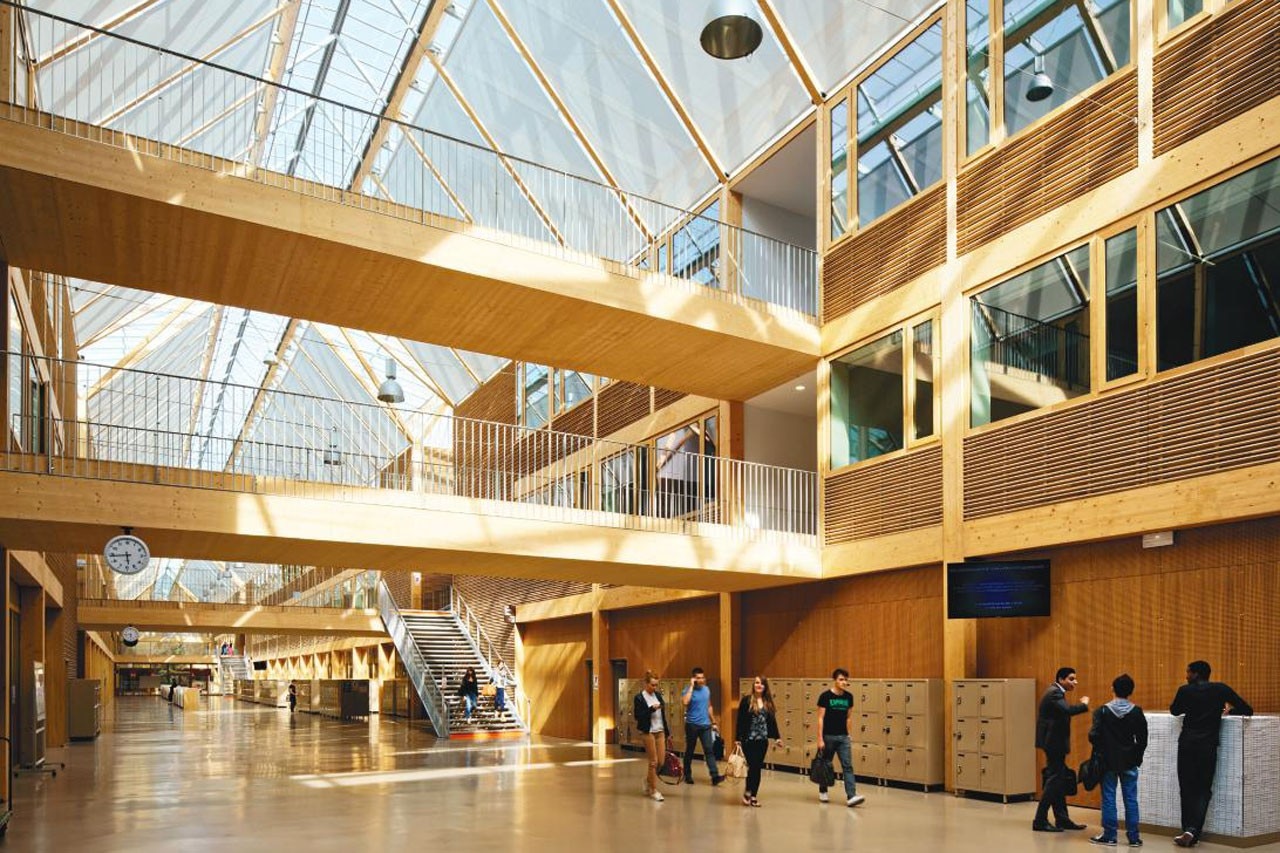
Built on stilts, the high school frees the ground below, for it is both floodable and polluted. This simple solution made it possible to gain additional sports space. By standardizing the structure, typical of covered markets, it was possible to build quickly, thus respecting a very tight construction schedule.
The auditorium that rounds out this arrangement is located in an adjacent building across the square. Its foldaway stage enables it to host the Orchestre des Pays de la Loire and also serves as their rehearsal hall. For acoustical reasons and to distinguish it from the high school, it has been built of concrete.
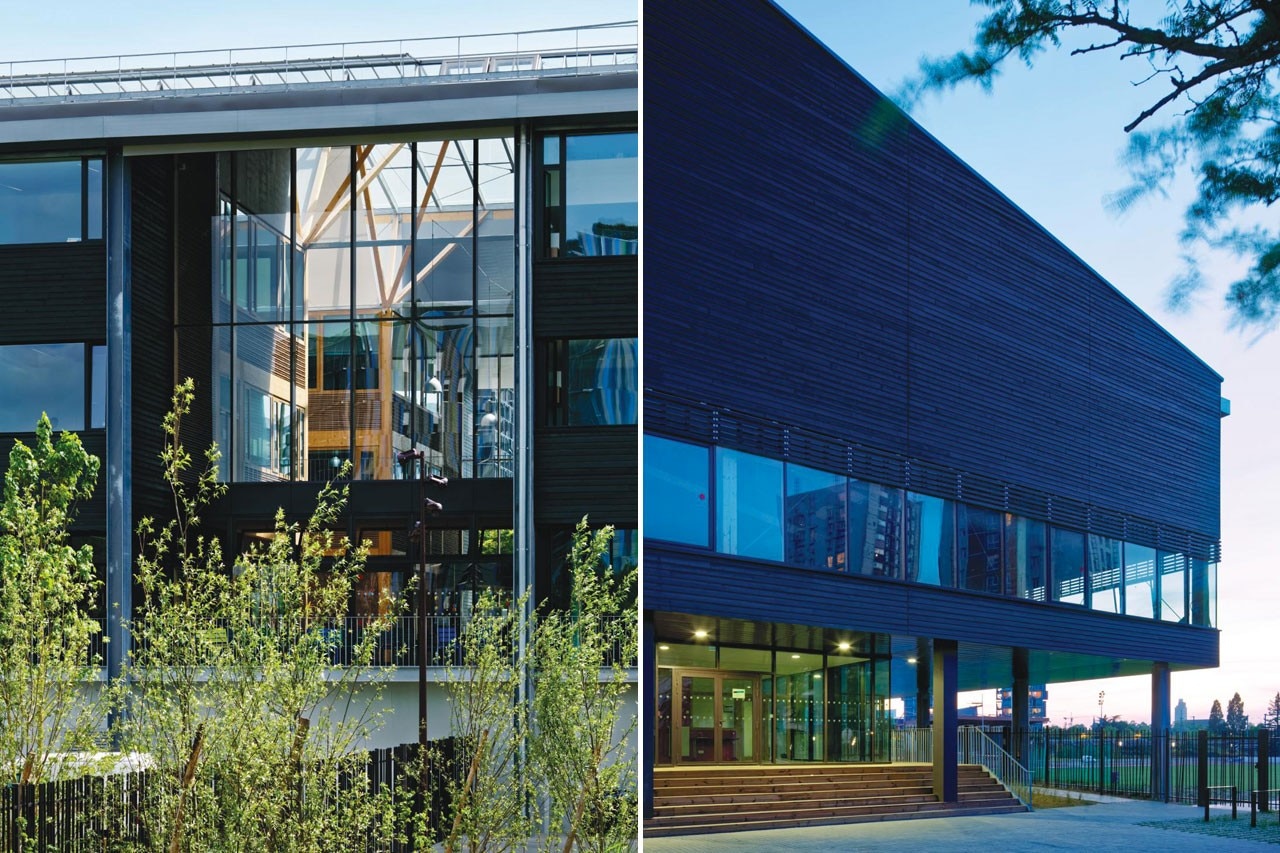
 View gallery
View gallery

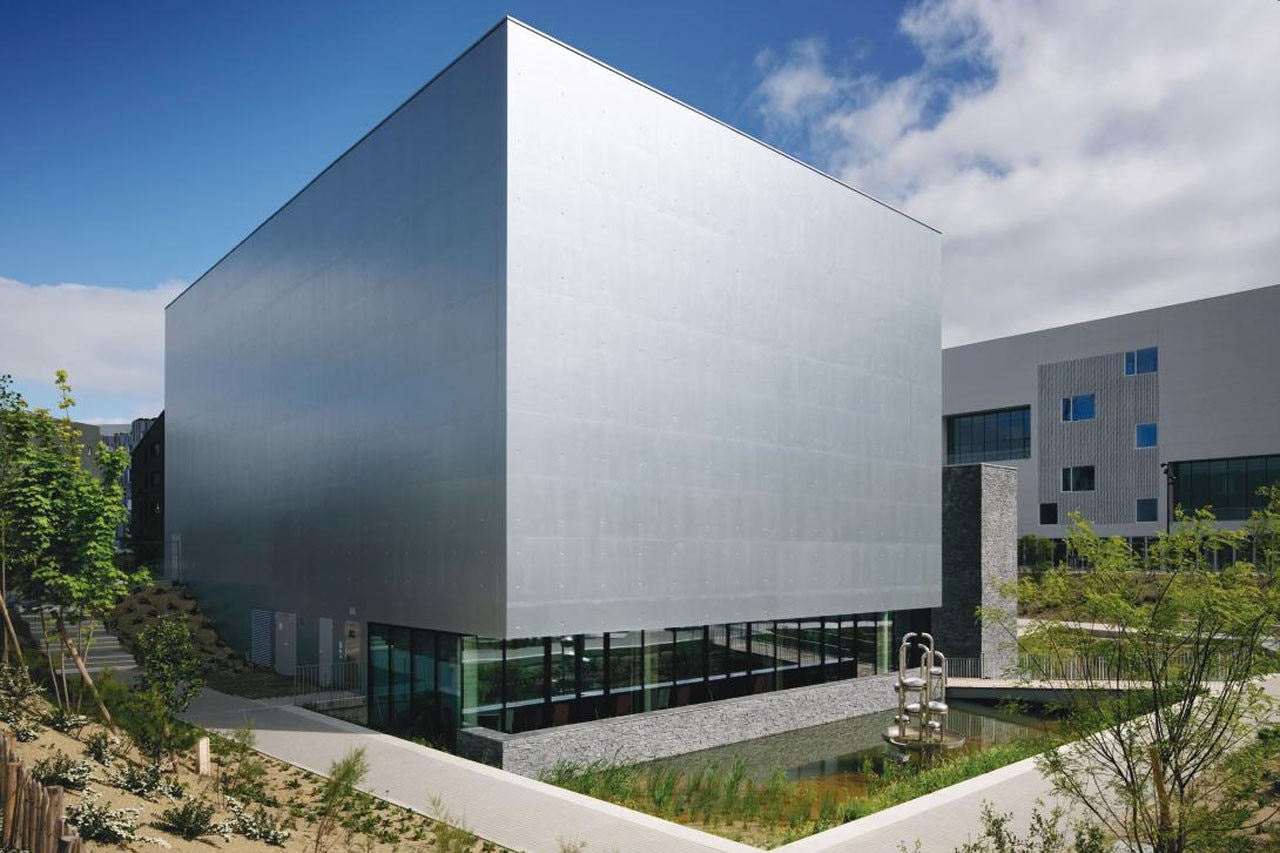
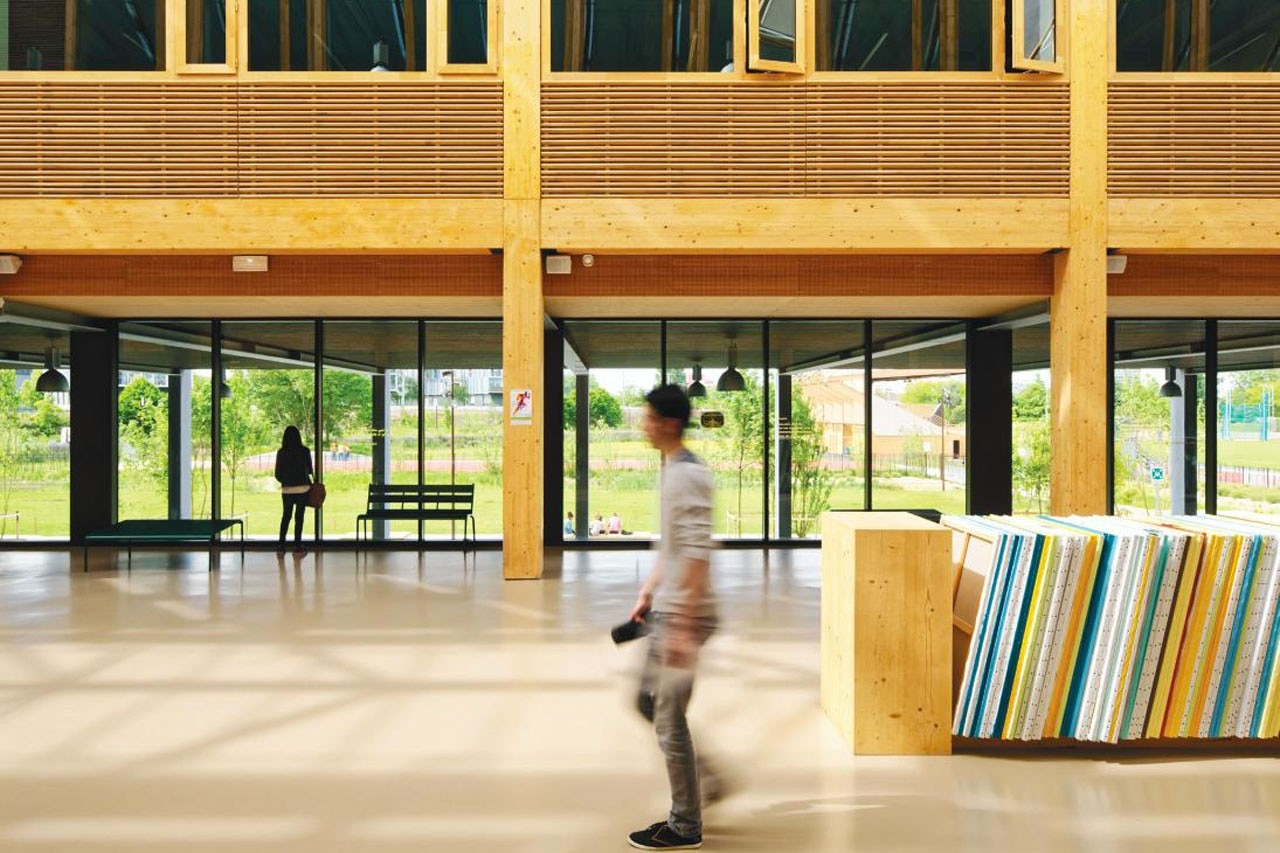
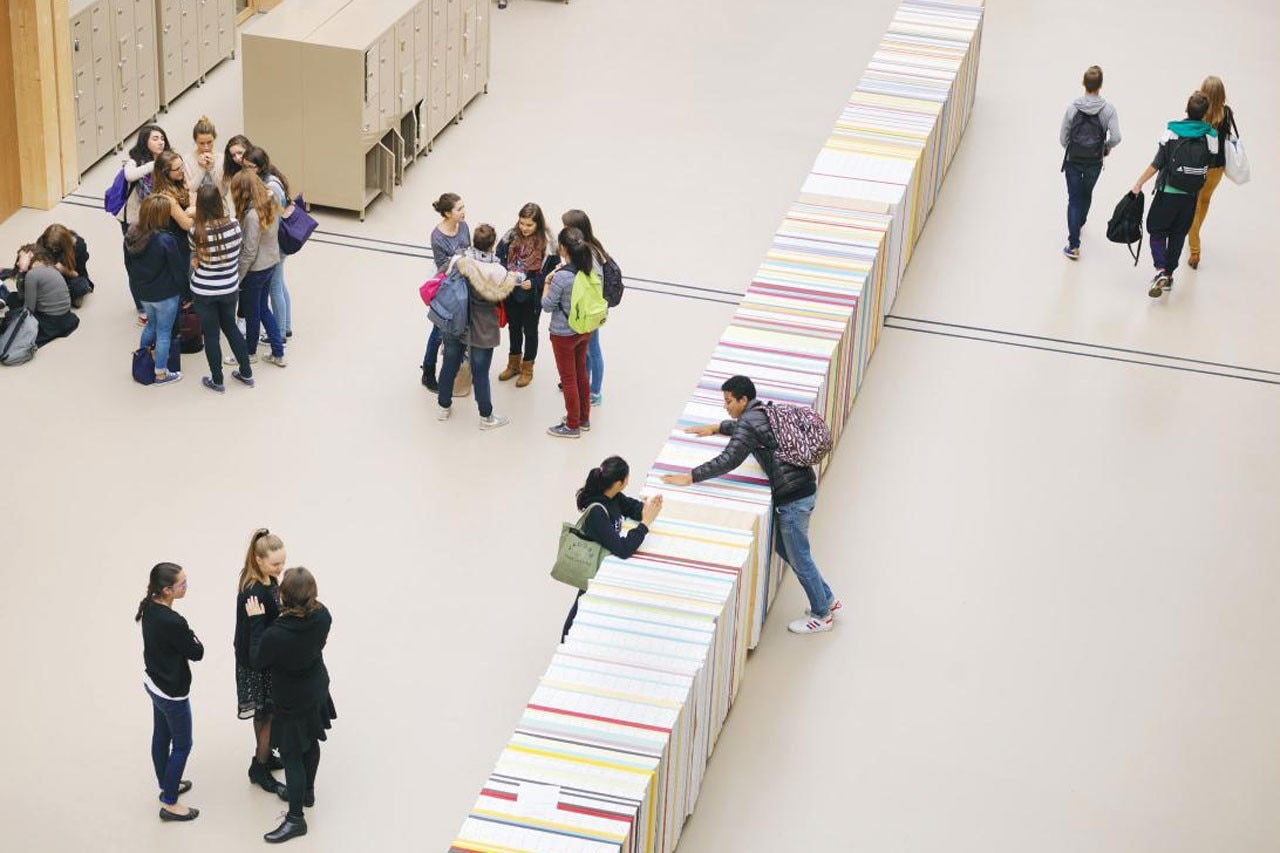
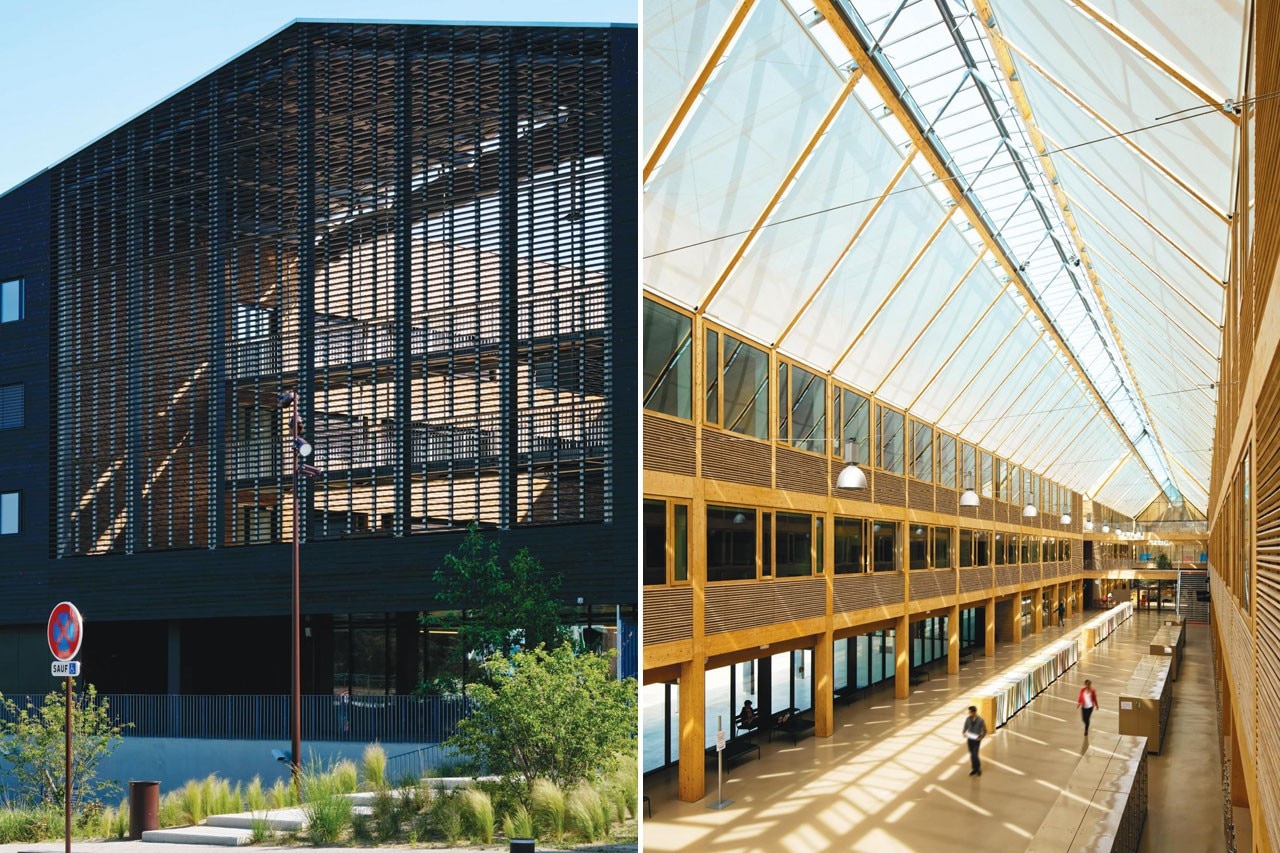
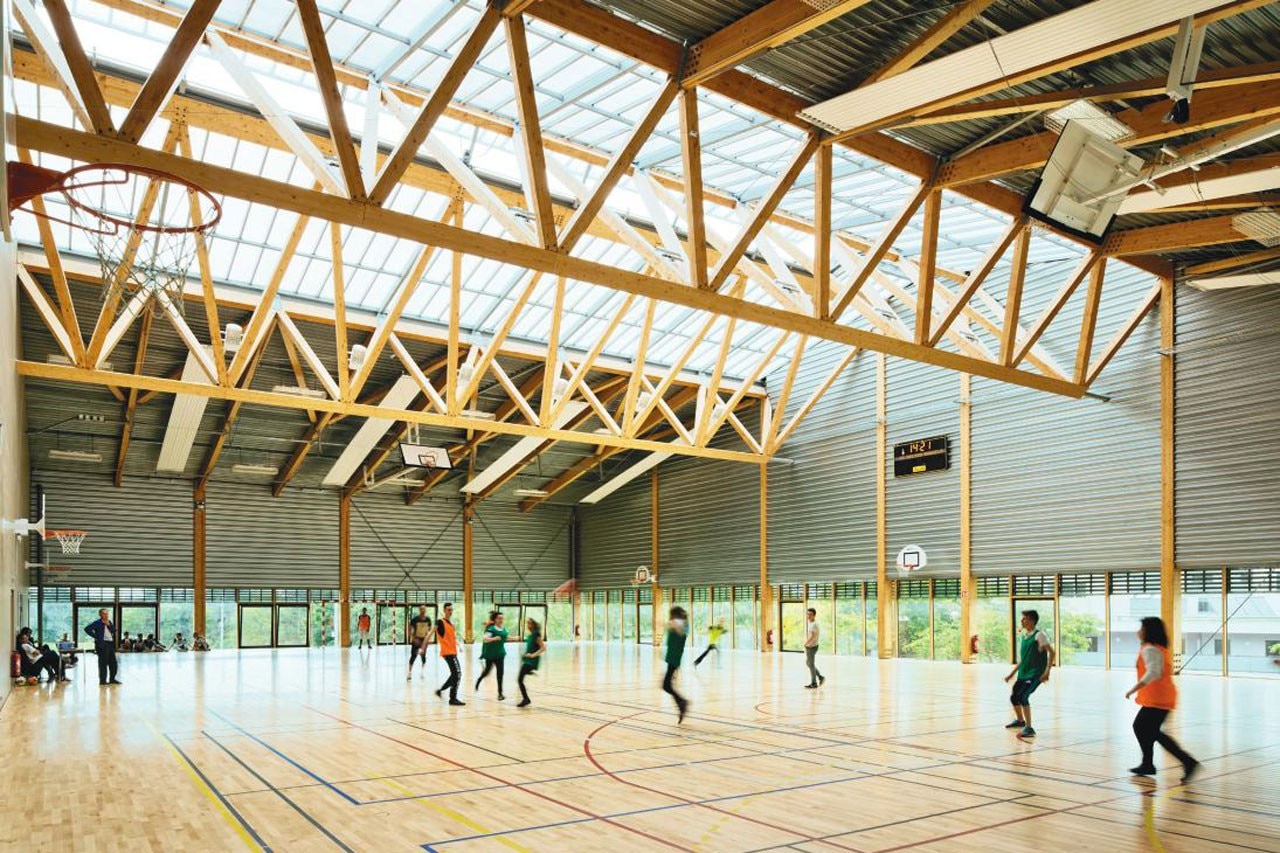
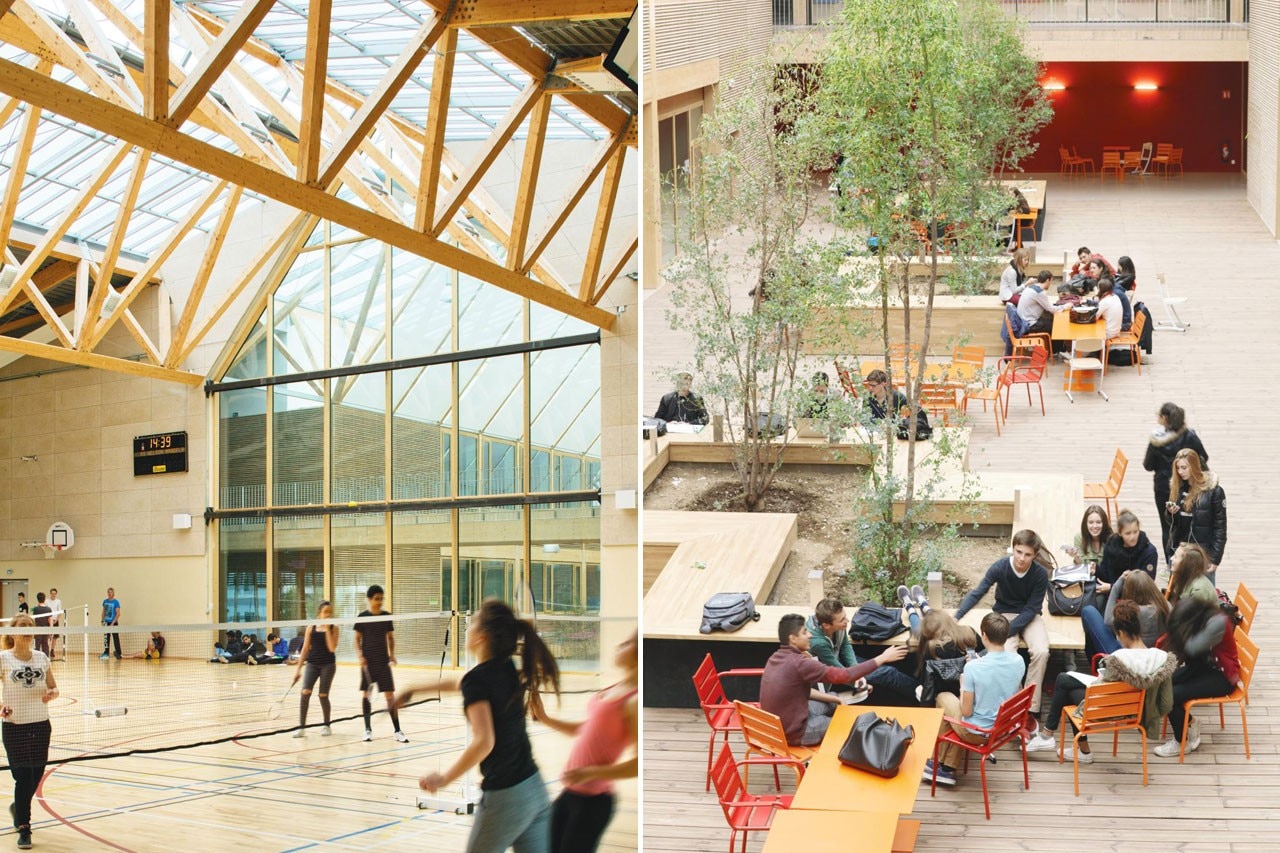
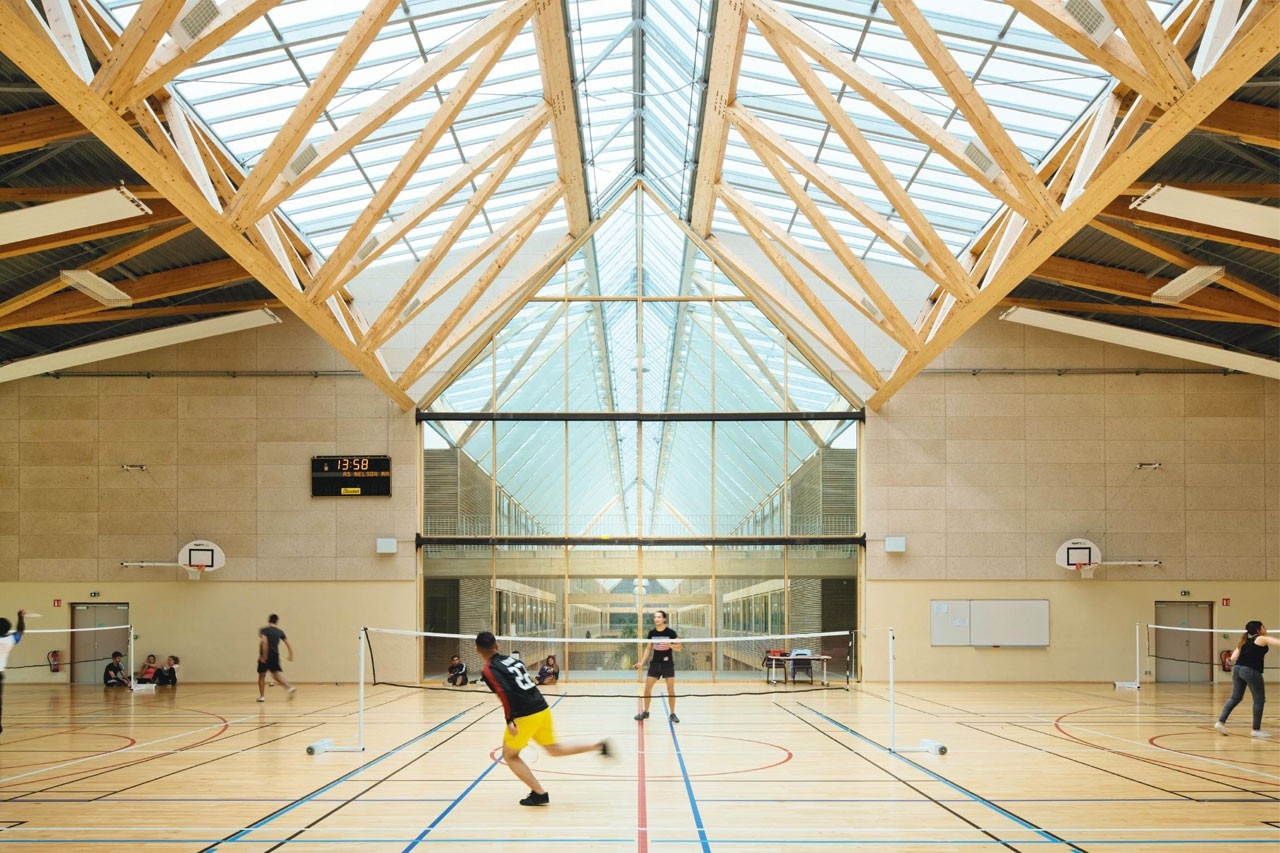
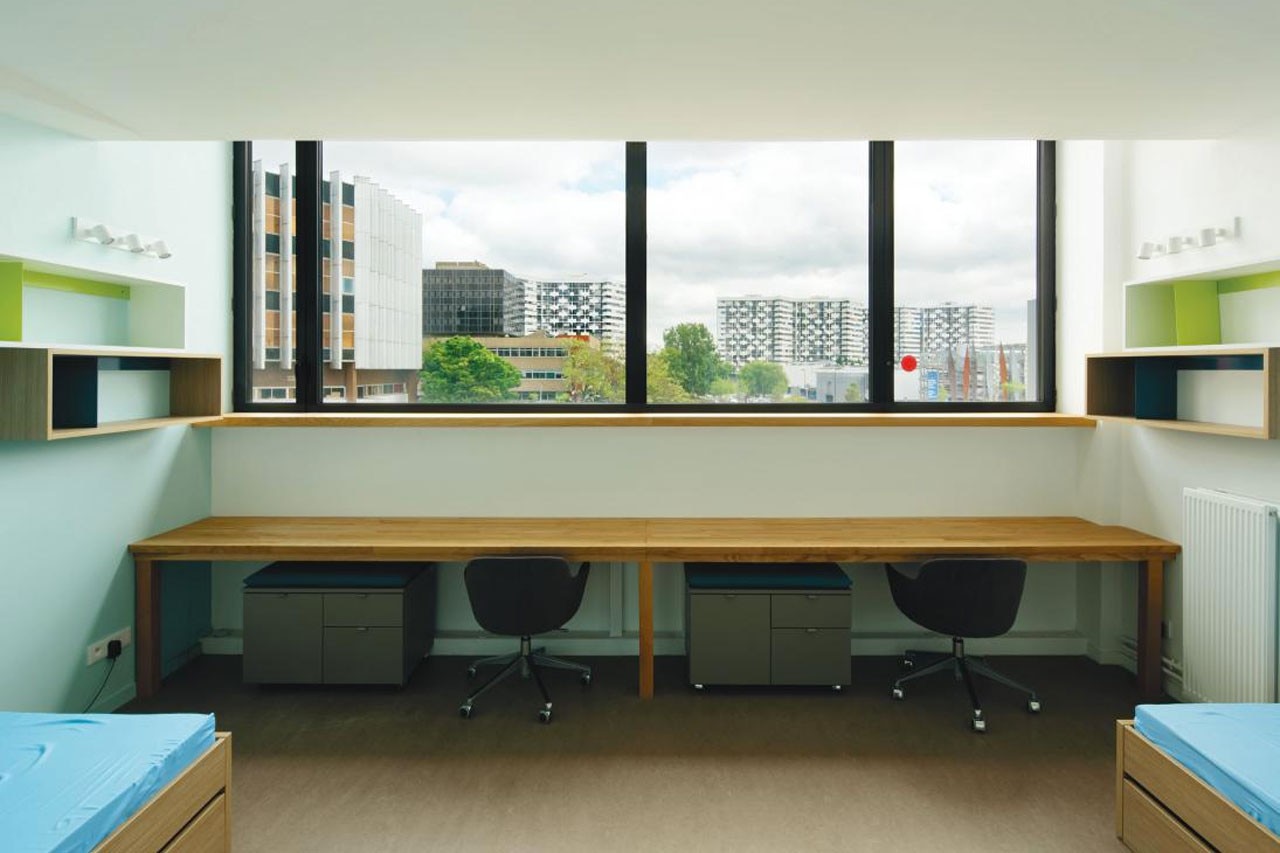
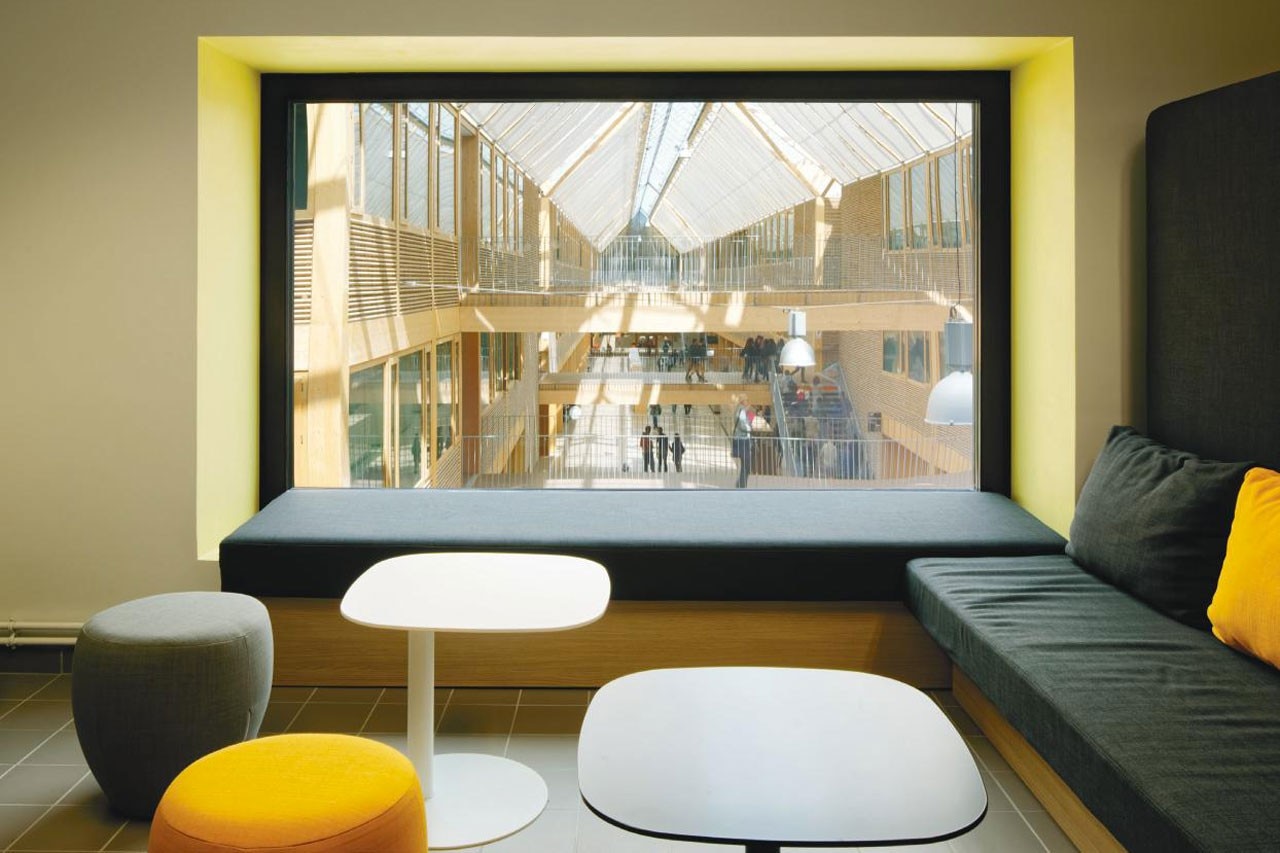
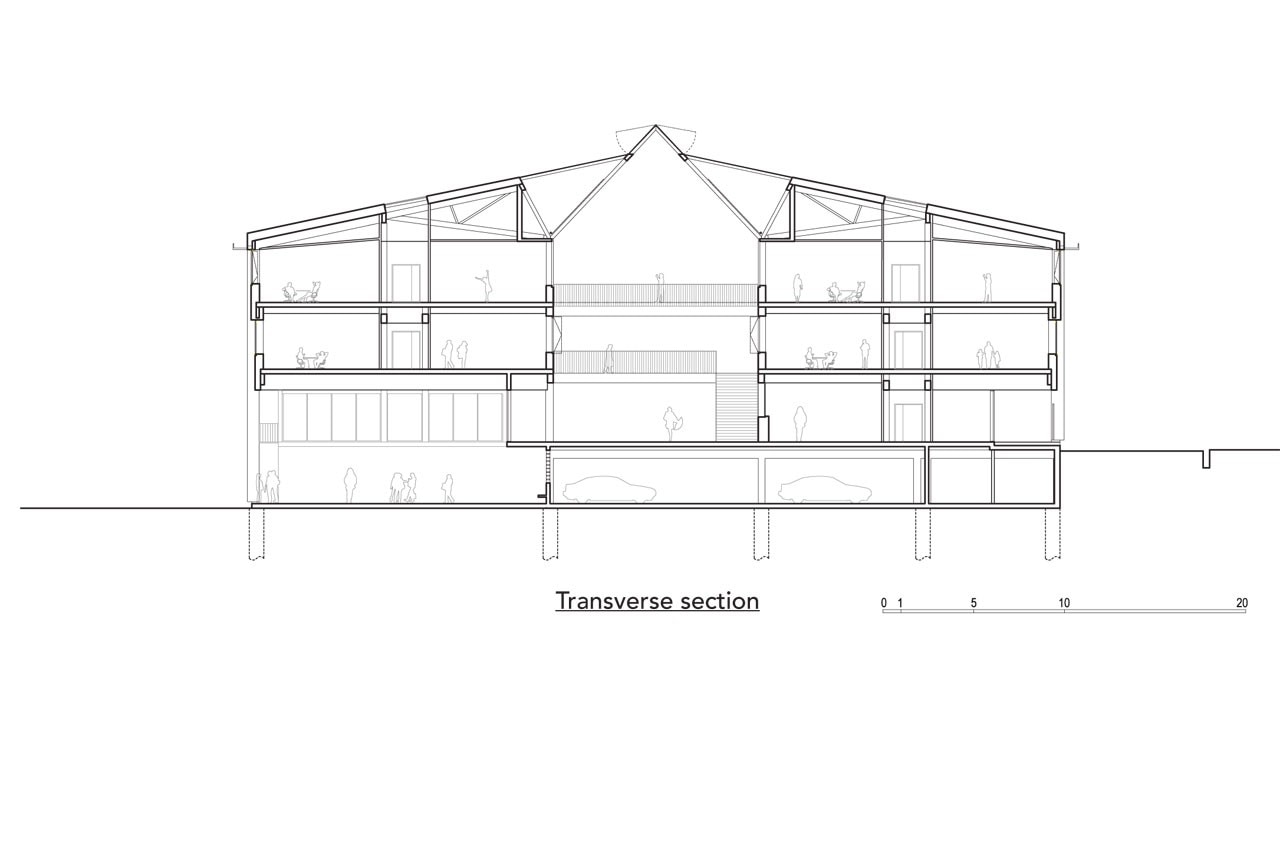
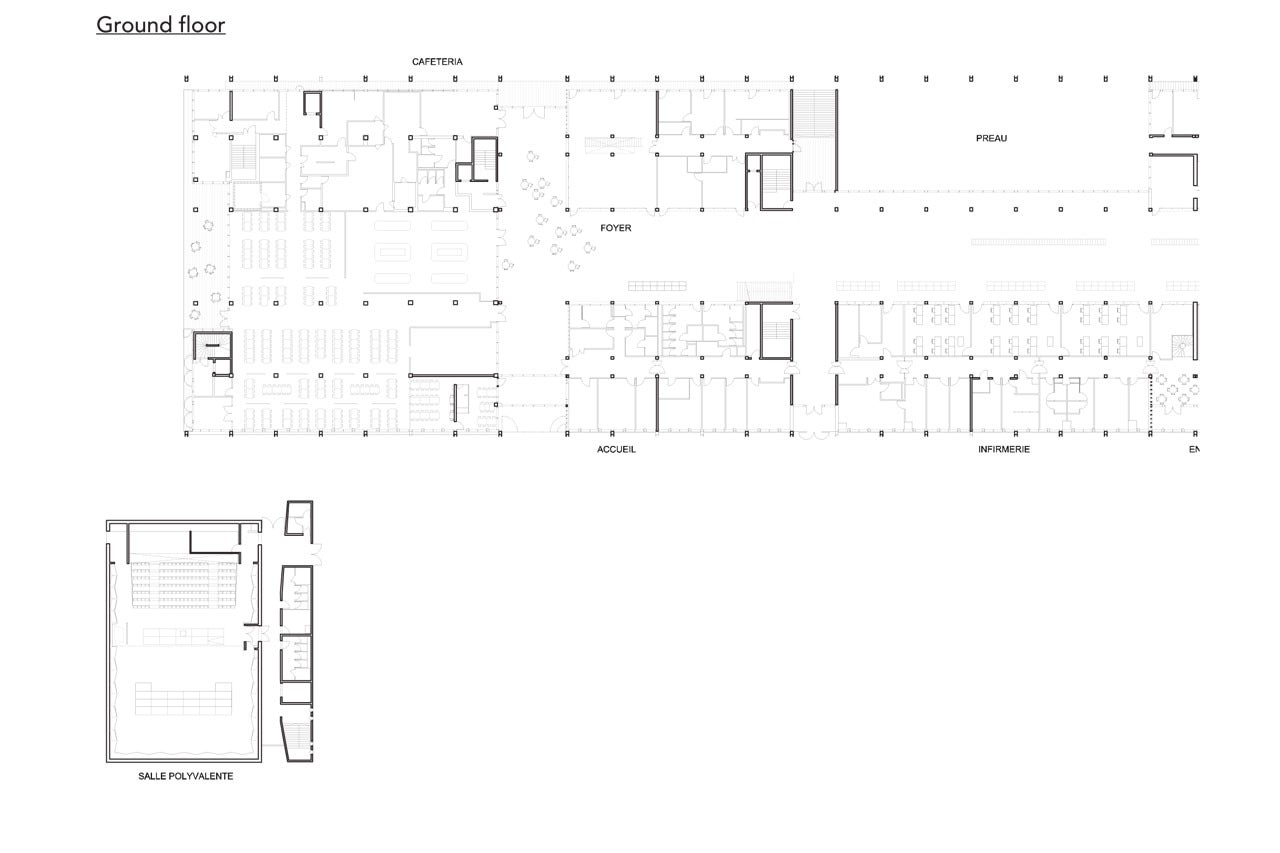
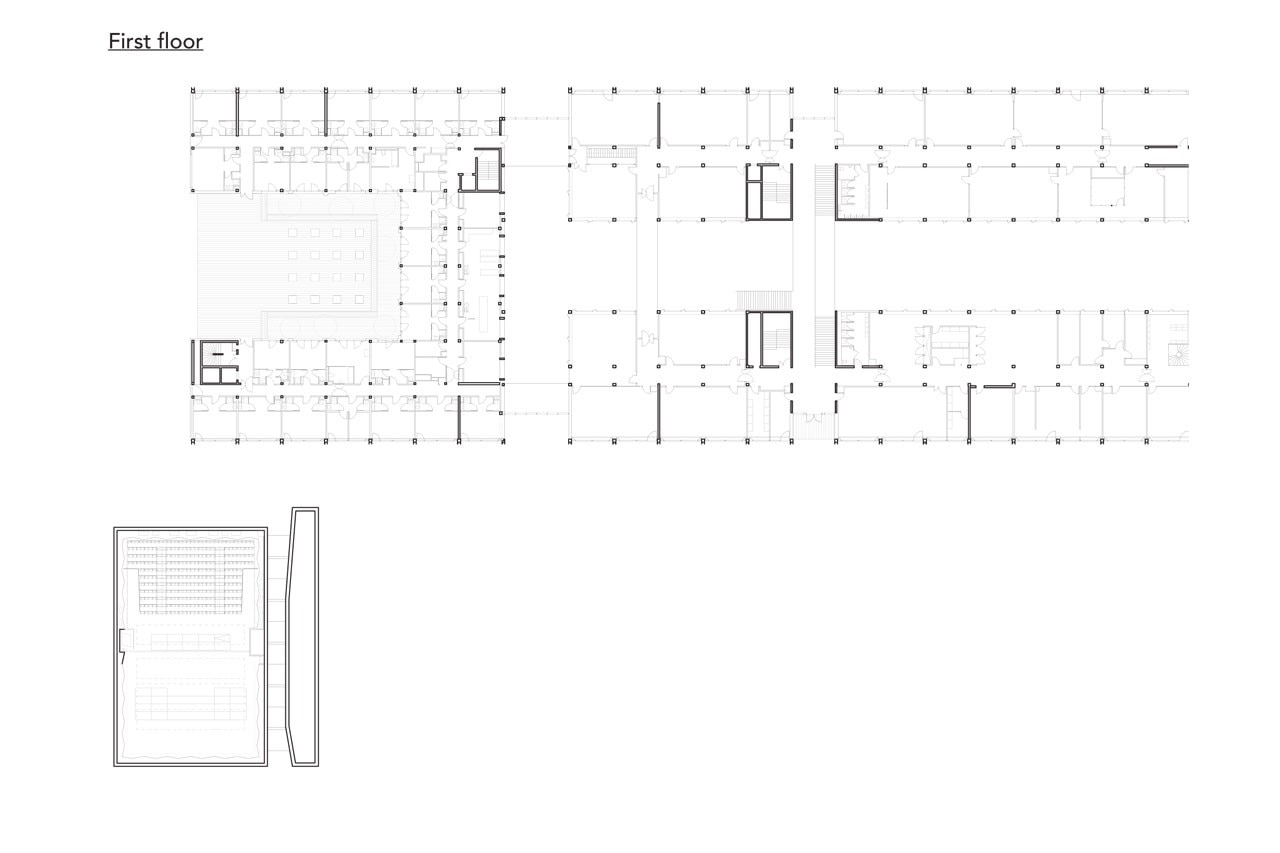
Lycée International Nelson Mandela, Île-de-Nantes, France
Program: school
Architects: François Leclercq architectes et urbanistes
Lanscape: D’ici là, paysagistes
Engineering firms: Setec, Mazet & Associés, Ecsb, Avel acoustique, Alma consulting, Socotec
Contractors: Entreprises Sogea, Etpo, Caillaud, Botte, Cegelec cvc, Sofradi, Scob
Client: Région Pays de la Loire
Budget: €52 million
Area: 25,500 sqm
Completion: 2014


